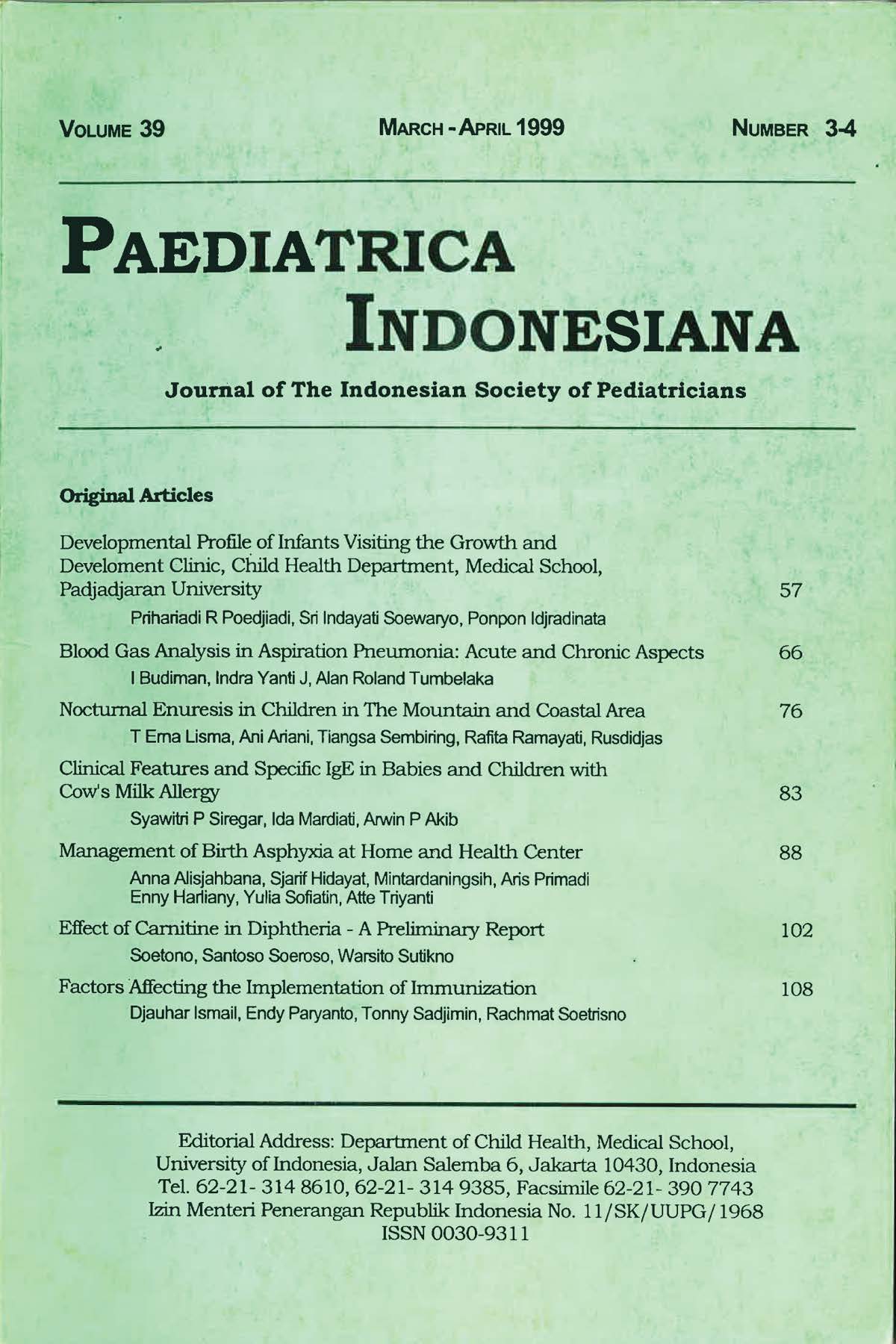Factors affecting the implementation of immunization
Abstract
Immunization coverage of vulnerable children is a critical indication ofsuccess in health development This study aimed to detennine the role of various factors in the basic immunization status of under five children. In Godean sulxiistrict, district of Sleman, Yogyakarta, interviews were conducted with 161 mothers of 14 to 59 months old children selected by stratified random sampling with the village as the unit of study and 27.3 per cent probability of being included in the study. Immunization status of children was recorded on an interval scale, with a value of 8 representing complete basic immunization status. We found that basic immunization
status of children had significant relation to the level of mother's knowledge concerning immunization, the educational background of both mother and father, family income, and the number of children (p < 0.05). From the factors, the level of mother's knowledge about immunization had the most relation to immunization status (relative contribution was 73.9 %). This factor was significantly influenced by the mother's formal educational background, the father's formal educational background, and family income (p < 0.05). Those factors necessarily should be
included in the strategy of community education in order to increase the
immunization coverage.
References
Bali.
2. Gunawan, S. Akselerasi Program Imunisasi 1985-1989, Berita Epidemiologi, Edisi Khusus Kwartal II, 1985
3. Sudaryat, S., Aryasa, N.K. dan Metri, W. Cakupan_ imunisasi pada bayi umur 3-14 bulan pada pengunjung Poli Anak RSUP Denpasar, Medika, 1987, 4: 345-9
4. Sarwanto dan Prasetyo, 1987, Analisis cakupan Puskesmas dalam kegiatan KIA : Studi kasus di 3 Propinsi di Indonesia, Medika, 1987, 4 : 350-4
5. Province of Yogyakarta Health Office. Tinjauan singkat pelaksanaan Pengembangan Program Imunisasi Propinsi Daerah lstimewa Yogyakarta tahun 1985/1986, Rapat Kerja Pemantapan Akselerasi Program lmumsast 1986.
6. Bonilla, JES, Gamarra, JIM, Booth, EM. Bridging the communication gap. How mothers in Honduras perceived immunization, Assignment Children, 1985, 69/72, Unicef.
7. Singarimbun, M, Streatfield, K and Singarimbun I, 1986. Factors affecting the use of childhood immunization in IndoneSia, The Populanon Council, Bangkok, 1986.
Authors who publish with this journal agree to the following terms:
Authors retain copyright and grant the journal right of first publication with the work simultaneously licensed under a Creative Commons Attribution License that allows others to share the work with an acknowledgement of the work's authorship and initial publication in this journal.
Authors are able to enter into separate, additional contractual arrangements for the non-exclusive distribution of the journal's published version of the work (e.g., post it to an institutional repository or publish it in a book), with an acknowledgement of its initial publication in this journal.
Accepted 2017-11-16
Published 1999-04-30













